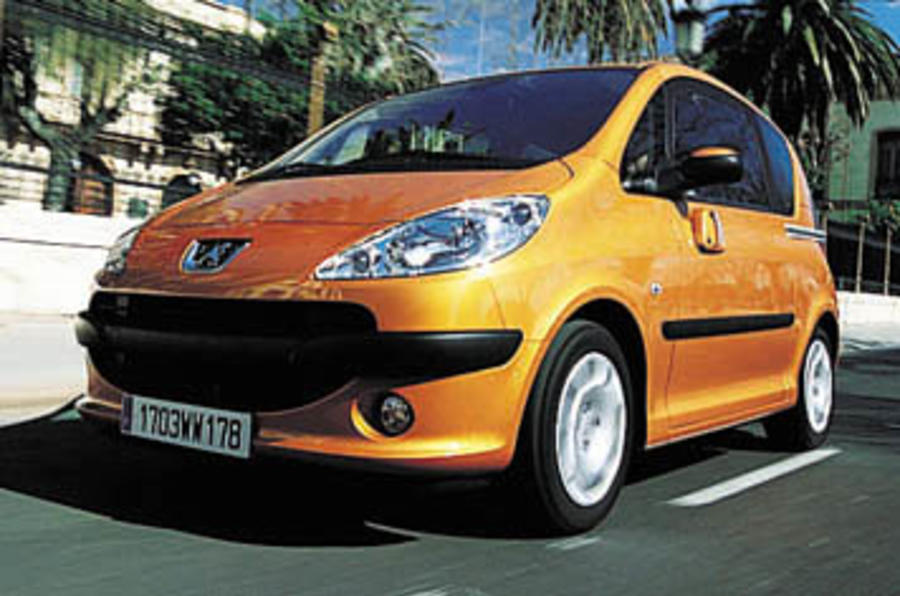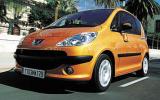On the surface, the Peugeot 1007 could be one of those cars that provides answers to questions no one has yet bothered to ask. Why, you may be thinking, does the world need a small car with just two doors that open electrically and which motor backwards, rather than outwards like every other car’s have for the past 100 years? And why does Peugeot think we require a supermini with more headroom than Dr Who’s new Tardis, and an interior with so many seating combinations you need a super-computer just to work out which seat you’re supposed to sit in if it’s a Thursday and the kids are on school holiday?Answer: because us humans are apparently getting bigger. And more sophisticated. And inevitably more affluent in our tastes, especially down at the 1007’s ultra-competitive 11-12 grand area of the market. Today, a straight-forward supermini is regarded as a somewhat boring statement of intent. Drive a humble five-door Ford Fiesta or Peugeot 206 and, so goes the conception, you’re just not getting the most out of life.So enter the 1007 – a little weird to look at, a little wonderful to be in, and with a pair of electric sliding side doors that will surely make your kids the envy of the school when the holidays are over and the school run starts up again. I mean, just imagine the looks on their friends faces when, standing beside your new 1007 at the school gate, key in hand, you hit the button on the fob and the left (or right) door glides open, allowing your offspring to clamber aboard. Turning up to collect them in a Lamborghini Murciélago would only be a marginally more kosher way to behave. So long as it was lime green. And had a sports exhaust.And when you think about it, electric sliding doors are actually a very good idea for all sorts of reasons. It’s a fact that our cars, in order to accommodate our burgeoning frames, are getting bigger. Only the other day my father-in-law nearly broke down in tears when he found he couldn’t get his new Ford Focus into his garage because it was too wide. Actually that’s not true: he could get his new Focus into his garage, but he couldn’t then open the doors to get out once inside. So he drove his new Focus back to the dealership, asked for his money back and ordered an old Focus, which he’d been getting into and out of once inside his garage for years. Had his new Focus had sliding doors…But apart from its ever-so-clever doors, what else has the 1007 got that other superminis haven’t? Well, for a start it’s not exactly supermini-sized. Based on the same effective but hardly revolutionary underpinnings as the Citroën C2, it is nothing if not conventional in mechanical layout – struts and coils at the front, torsion beam at the rear with slightly beefier anti-roll bars to compensate for its higher centre of gravity. But at 3731mm long, 1620mm high and 2008mm wide including the mirrors (or doors, when they’re open – the total width is exactly the same), it’s also far bigger than a 206 and not far off a Ford Focus.Where the 1007 gets clever, though, is in the flexibility it provides within its conventional space parameters. The cabin is rife with cubbies and secret stowage areas, and the rear seats do everything but remove themselves hydraulically, allowing all sorts of permutations to be exploited between luggage and passenger space. The 1007 can even be turned into a two-seater mini-van capable of swallowing a small wardrobe by hiking the rear seats up into a vertical position. On the other hand, by shifting the rear seats as far back as possible (which can be done collectively or individually) you can transform your 1007 into a car that’s at least as roomy for four people as a VW Golf, though luggage space does shrink from a possible 1192 litres to a measly 246 litres in the process.In the driver’s seatThe 1007 feels appropriately different behind the wheel, too. You climb up and into it to a certain extent, but because the door opening is so wide it’s not the usual struggle to do so. You merely hit the button on the key or tug the outer handle and away the door goes to reveal a huge aperture. Peugeot even claims small children can squeeze into the back without the front seats needing to be moved, though I suspect this is only possible if they are a) under six, and b) fed a diet of two grains of rice a month for at least two years before attempting this particular feat.Once ensconced behind the good-looking steering wheel it’s hard to know quite where to look first, so numerous are the visual and ergonomic treats. The goodie count is exceptional even on the basic Dolce-spec HDi diesel model (electric windows, mirrors, automatic wipers and lights, electric doors, air conditioning, CD player). But inevitably your eyes are drawn to the base of the windscreen first, which is simply miles away; no way can you reach out and touch it from behind the wheel.Between you and the end of the screen are two huge open storage areas that look good but which are, in fact, pretty useless. They’re flat and shallow so whatever you put in them invariably flies out and falls on the floor at the first corner. Other aspects that strike you in the first few minutes at the wheel are, in no particular order: a fine driving position with a wheel that adjusts for height and reach, and a seat that adjusts vertically, too; a clear and good-looking set of instruments; pedals that are in exactly the right position, ditto the gearlever; and a curious lack of rear visibility due to the rear-view mirror seemingly being mounted a good two inches too low on the screen.On the move, the 1007 is not Peugeot’s finest hour, and is not meant to be, either. It’s good enough, reckons Peugeot, for its target audience, and apart from an excessive amount of body roll and a ride that’s just not as soothing as you’d expect from a small Peugeot, we’d be inclined to agree. In truth, it’s one of those increasingly common small cars that does exactly what it says on the tin dynamically and nothing more. It’s massively safe (you get anti-lock brakes, traction control, about 460 airbags and ESP as standard), reasonably comfortable and impressively refined. And utterly unamazing to drive. From a company with as rich a history as Peugeot in producing regular family cars that are surprisingly excellent to drive, this does seem a mite disappointing.I drove two versions: the 1.4-litre 70bhp/120lb ft HDi in £11,550 Dolce trim plus the 1.4-litre petrol in Sport guise (75bhp, 88lb ft and £12,100), neither of which showed much more promise of delivering the goods than the other. If anything, the HDi felt marginally swifter and certainly rode more sweetly on its softer suspension. The only other engine option is the 110bhp/110lb ft 1.6-litre petrol which comes as standard with a new 2-Tronic paddle-shift semi-automatic gearbox. Sounds exciting but, when fitted to the 1.4, I actually preferred the manual due to the slow-witted programming of the semi-auto ’box.So, on the one hand the 1007 can’t help but win praise for its innovative design features, and for the fact that it creates new solutions to the space problems we’re increasingly beginning to face as our roads become ever-more crowded. On the other, Peugeot’s apparent lack of desire to provide such solutions without making them in any way fun to experience from behind the wheel does leave a slightly odd taste in the mouth.If you like exploring the packaging of your cars and relish fresh design ideas inside them, you’ll love it. And so will your kids. Which is nice. But if you like driving as well, you’ll find surprisingly little to keep you interested in the 1007. Which is a pity.In the end, you can’t help wondering whether a car that’s this much fun to be in shouldn’t also be a teeny bit more fun to drive.
Peugeot shows other small cars the door
Close
Back to top



























Add your comment